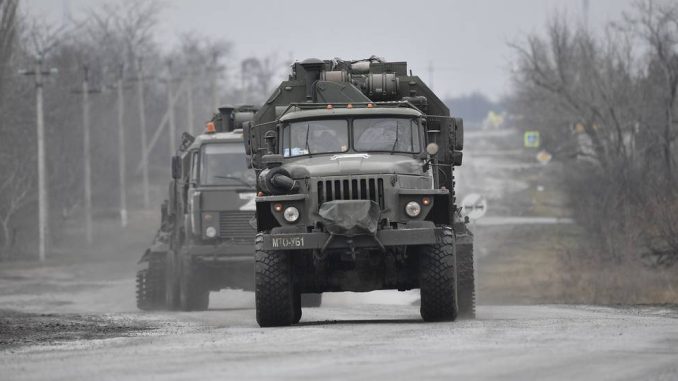
For military artillery crews, going against an armored vehicle well within range of that vehicle’s gun is the thing of nightmares.
Vehicles are more armored, can shoot on the move, typically can shoot faster and are designed for a close fight.
Artillery howitzers, on the other hand, are meant to lob shots onto an enemy position miles away from the front line.
But in the desperate fighting around Kherson, Ukraine ― now reportedly taken over by the Russians ― in the very first days of the Russian invasion, a Ukrainian artillery crew may have faced off with Russian armored vehicles advancing on a hotly contested bridge outside the city.
Though Kherson, Ukraine, fell into Russian hands on Wednesday, the defenders of the city, possibly including one brave howitzer crew, played a significant role in slowing down the Russian southern advance.
On Feb. 26 a CNN reporter toured a bridge on the outskirts of Kherson, Ukraine, that just hours earlier had been the scene of some of the most intense fighting in the first few days of the war.
The bridge was key chokepoint that, if taken, would allow the Russian military to cross the Dnieper River and into central and southern Ukraine.
By the time Nick Paton Walsh and the rest of his CNN crew arrived at the bridge it had changed hands multiple times.
Ukrainian President Volodymyr Zelensky said the city saw the toughest fighting in the first few days of the war.
Though it is impossible to tell without eyewitness accounts or video of the actual fighting, CNN footage shows one Ukrainian 152 mm 2A65 Msta-B, a Soviet-style howitzer, appearing to be lined up facing the strategically important bridge head on, surrounded by impacts and two abandoned artillery shells.
“Shelling continued back and forth, and through the smoke CNN could see what appeared to be armored vehicles on the bridge moving towards the Ukrainian side, although it was not possible to confirm who they belong to,” Walsh said.
RELATED
:quality(70)/cloudfront-us-east-1.images.arcpublishing.com/mco/A225IUNARVF3PKD4NC34AZYBOQ.jpg)
Tactically, sending in U.S. howitzers to stop such an advance using direct fire would go directly against U.S. military doctrine.
“The preferred defense technique against an armored or mechanized ground attack is for the battery or platoon to displace to an alternate position and continue the mission,” an Army manual on how to deploy a howitzer battery said. “Direct confrontation with this type of force is not advised.”
However, Soviet-style howitzers, like the Msta-B, were designed with direct fire in mind, said Tim Heck, an Eastern armies scholar and a Marine reserve artillery officer.
The Mst-B comes with some forward-facing armor that modern U.S. howitzers simply don’t have.
“If they are shooting thin skinned vehicle, no worries,” Heck said in a written statement. “Tanks would be trickier, but not unreasonable if the ammo load is right.”
But even with the splinter shield in front, the Ukrainian crew likely would have been vulnerable to anything more than a light or medium machine gun, Heck said.
Roman Fontana, a former enlisted U.S. Marine who has worked with the Ukrainian military, said the Ukrainian force tends to be creative in how it deploys old equipment often in need of repairs.
“They’ll take weapons not for their intended uses and turn it into something else,” Fontana said.
If a U.S. artillery battery was to perform direct fire, it typically would use every gun in the battery. The fact that only one howitzer seemed to be set up to take on the advancing armored vehicles may indicate the Ukrainian force had to get creative with limited resources.
Fontana said the barrel on that specific cannon may have been too worn down to be used effectively for indirect fire. But it still was possible to shoot straight over short distances.
“If you have a broken tennis racket that you patched together and fixed, you can still get the ball where you need it to go.” he said.
Another possibility from the images was that the howitzer was attempting to withdraw when the vehicle towing it was taken out by enemy fire.
Heck noted that the cannon did not have its trails dug in, indicating that the emplacement may have been a rush job and it was possible the crew retreated from the cannon before it was able to get a shot off.
Eventually, the Russians were able to take the bridge and now have taken Kherson, according to The New York Times.
But the Russian advance in the area and in the rest of the country was significantly delayed due to the unexpected fighting prowess of the Ukrainian military.
And possibly due to one suicidally brave cannon crew willing to face down a column of advancing Russian armored vehicles.



Be the first to comment